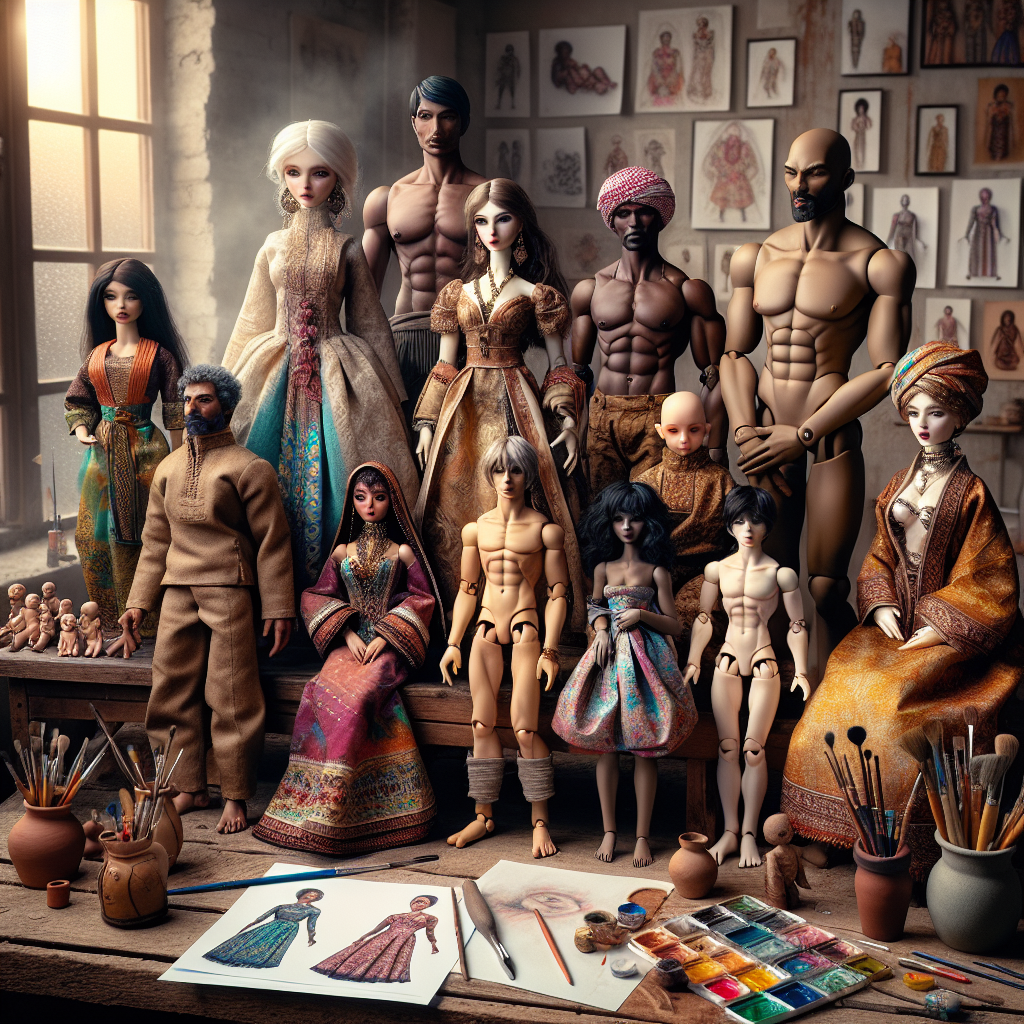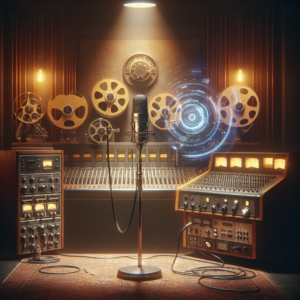Artists Push Back Against Barbie-like AI Dolls with Their Own Creations
In the ever-evolving landscape of toys and technology, a fascinating battle is brewing between the world of artificial intelligence and the creativity of artists. With the recent surge in popularity of Barbie-like AI dolls, which are designed to mimic human appearance and behavior, a group of artists is stepping forward to challenge the status quo. They are using their talents and unique perspectives to create alternatives that push back against the homogenization of beauty standards and the limitations imposed by AI-generated figures.
The Rise of AI Dolls
AI dolls have gained considerable attention for their lifelike features and ability to interact with children in increasingly sophisticated ways. These dolls are often programmed with a plethora of responses and can engage in conversation, play games, and even mimic emotions. However, their rapid rise has not come without criticism. Many believe that these dolls promote unrealistic beauty standards and reinforce societal norms that are detrimental to self-image, especially among young girls.
Some of the key concerns regarding AI dolls include:
1. Unrealistic Beauty Standards: AI dolls often embody an idealized version of beauty that is not reflective of real-world diversity.
2. Lack of Authenticity: The synthetic nature of AI dolls raises questions about the authenticity of relationships that children form with them.
3. Cultural Representation: Many AI dolls fail to represent the vast tapestry of cultures and identities present in today’s society.
In response to these concerns, artists have begun to reclaim the narrative by designing their own dolls, celebrating diversity, individuality, and authenticity.
Artists Respond: A Push for Authenticity
Artists are harnessing their creativity to address the shortcomings of AI dolls. By creating dolls that celebrate a spectrum of body types, skin tones, and cultural heritages, these artists are making a statement about inclusivity and representation. The dolls are often handmade or produced in limited quantities, emphasizing the value of craftsmanship and artistic expression.
Some notable movements among artists include:
1. Diverse Representation: Artists are producing dolls that represent various body shapes, sizes, and ethnicities, challenging the narrow definitions of beauty often propagated by mainstream toys.
2. Customizable Features: Many artists offer customizable options, allowing children (and collectors) to choose features that resonate with their individual identities.
3. Emotional Connection: Handmade dolls often come with backstories and unique personalities, encouraging children to develop emotional connections that are more meaningful than interactions with AI counterparts.
The Impact of Handmade Dolls
The dolls created by artists not only challenge the AI doll phenomenon but are also fostering a new wave of creativity and imagination among children. The unique traits and stories attached to each handmade doll inspire kids to engage in role-play, storytelling, and creative thinking.
Benefits of handmade dolls include:
1. Encouraging Creativity: Children who play with diverse dolls are inspired to create their own stories, fostering imagination and creativity.
2. Promoting Self-Acceptance: By presenting dolls that reflect various identities and experiences, these artists help children embrace their own uniqueness.
3. Building Empathy: Dolls that embody diverse stories encourage children to learn about and empathize with others, promoting inclusivity.
The Market Response
As artists continue to push back against the standardized offerings of AI dolls, the market has begun to take notice. Small businesses and independent creators are emerging, providing consumers with alternatives that are not only more authentic but often more ethically produced. This shift highlights the growing demand for representation and individuality in toys.
Key factors driving this market response include:
1. Consumer Demand: Parents and guardians are increasingly looking for toys that foster inclusiveness and authenticity for their children.
2. Social Media Influence: Platforms such as Instagram and TikTok have given artists a stage to showcase their work, leading to increased visibility and a subsequent rise in demand.
3. Sustainability Concerns: Eco-conscious consumers are drawn to handmade dolls that often use sustainable materials and ethical production practices.
The Role of Community and Collaboration
The movement against AI dolls is not just limited to individual artists but has evolved into a community-driven effort. Collaborations between artists, educators, and advocates are working to raise awareness about the importance of representation in toys.
Some collaborative efforts include:
1. Workshops and Events: Many artists are hosting workshops that teach children to create their own dolls, fostering a sense of community and shared creativity.
2. Advocacy Campaigns: Groups are forming to advocate for greater representation in the toy industry, highlighting the need for diverse options in children’s playthings.
3. Online Communities: Social media groups dedicated to handmade dolls and inclusive toys are creating networks of support and inspiration for both artists and consumers.
Looking Ahead: The Future of Dolls
The debate between AI dolls and handmade alternatives symbolizes a larger conversation about identity, creativity, and the impact of technology on children’s lives. As artists continue to create dolls that reflect the complexities of the human experience, they challenge the notion that toys should fit a predefined mold.
Key trends to watch in the future include:
1. Increased Collaboration: More artists may partner with toy companies to create hybrid products that balance technology with authenticity.
2. Innovative Materials: As sustainability becomes more pressing, the use of eco-friendly materials in doll production may rise, appealing to environmentally conscious consumers.
3. Expanded Storytelling: Future dolls may come with interactive stories that engage children in broader discussions about diversity and acceptance.
Conclusion
The pushback against Barbie-like AI dolls by artists exemplifies the power of creativity in shaping narratives and redefining beauty standards. By prioritizing diversity, authenticity, and emotional connection, these artists are not only creating alternative toys but are also helping to foster a generation that values individuality and empathy. As the toy industry continues to evolve, it will be essential to embrace the voices of artists and the unique perspectives they bring to the table. In doing so, we can ensure that the playthings of tomorrow reflect the rich tapestry of human experience, allowing every child to see themselves in their toys.



